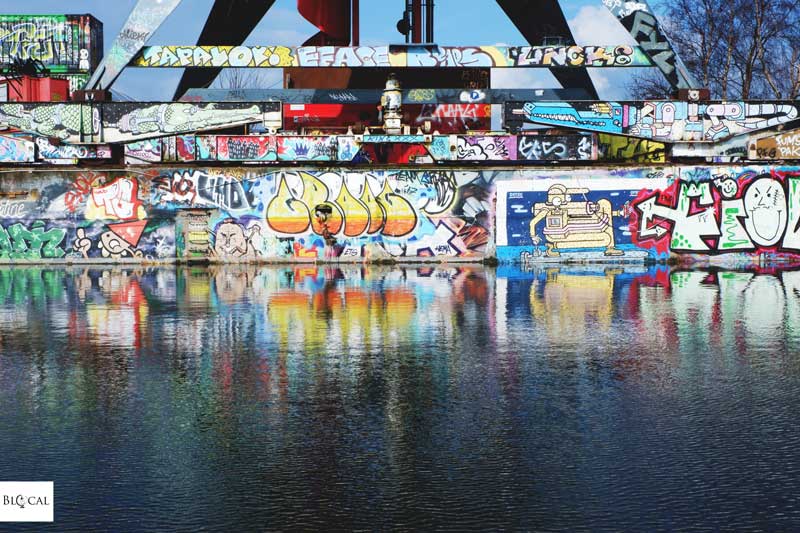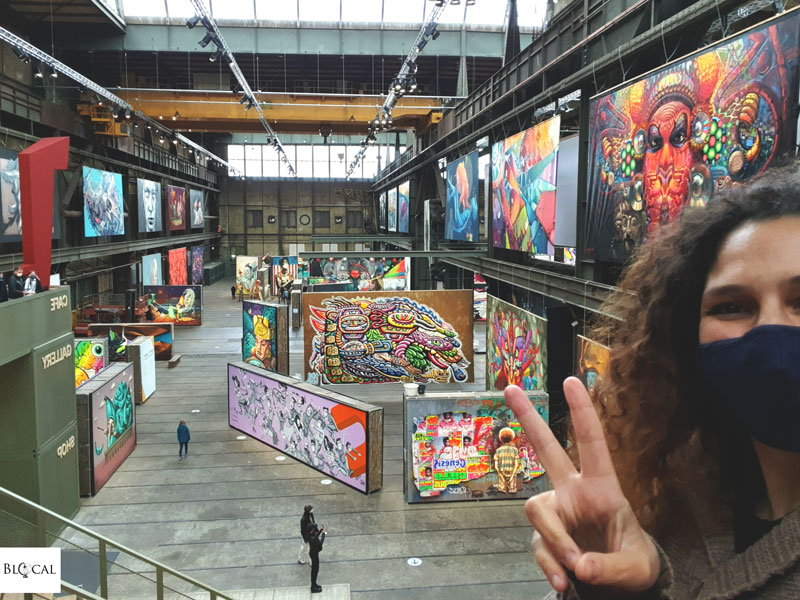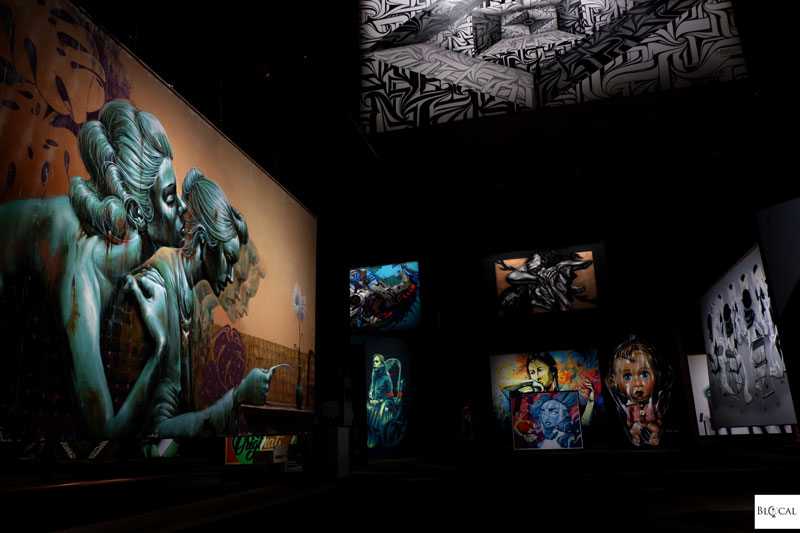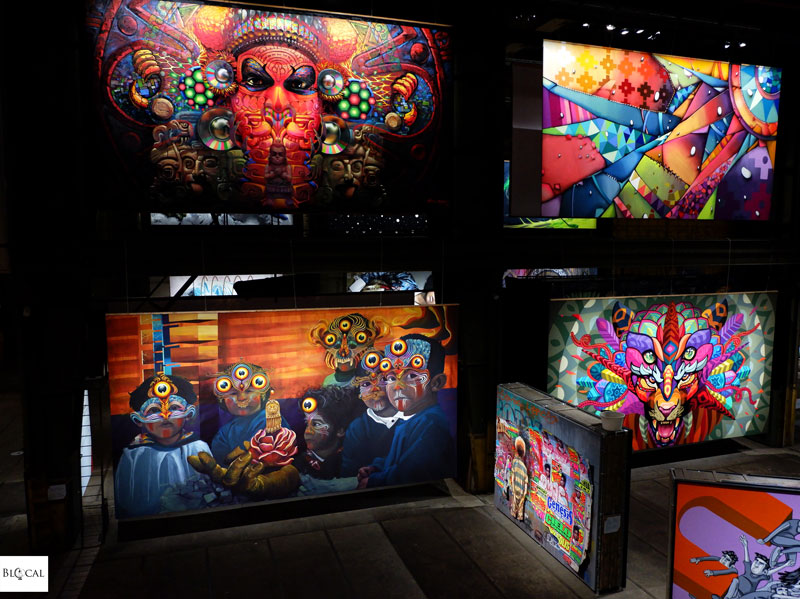In 2018, I moved to Amsterdam to take part in an ambitious project: to turn a former shipyard building into the world’s largest museum of street art and graffiti. The STRAAT Museum eventually opened its doors in October 2020, and here is an overview of what you can discover there.
Behind the Scenes of STRAAT Museum in Amsterdam Noord
The project began in 2015 with the visionary idea of turning a former shipyard building in Amsterdam Noord into a place to provide context for the largest art movement of the present time, where visitors could gain new insights and get inspired by what they see in the streets on a daily basis, albeit at a cursory glance.
The home couldn’t be more perfect: the former engineering workshop of what was once Europe’s largest shipyard (The Netherlands Dock and Shipbuilding Company, or NDSM). The streets in and around NDSM are covered with graffiti and independent street art that are continually changing. Long before STRAAT was founded as a museum, its walls already functioned as a true Hall of Fame, a place where anybody is welcome to paint.
Within such a dynamic scenario, national and international street artists were invited to create a work of art inside the warehouse on canvases as big as actual buildings. This is where all of the pieces of the museum collection are born: exactly where you are going to see them. They were created to exist in a certain place (a vacant warehouse of The Netherlands Docks and Shipbuilding Company) in respect of the condition of site-specificity that is at the core of street art.
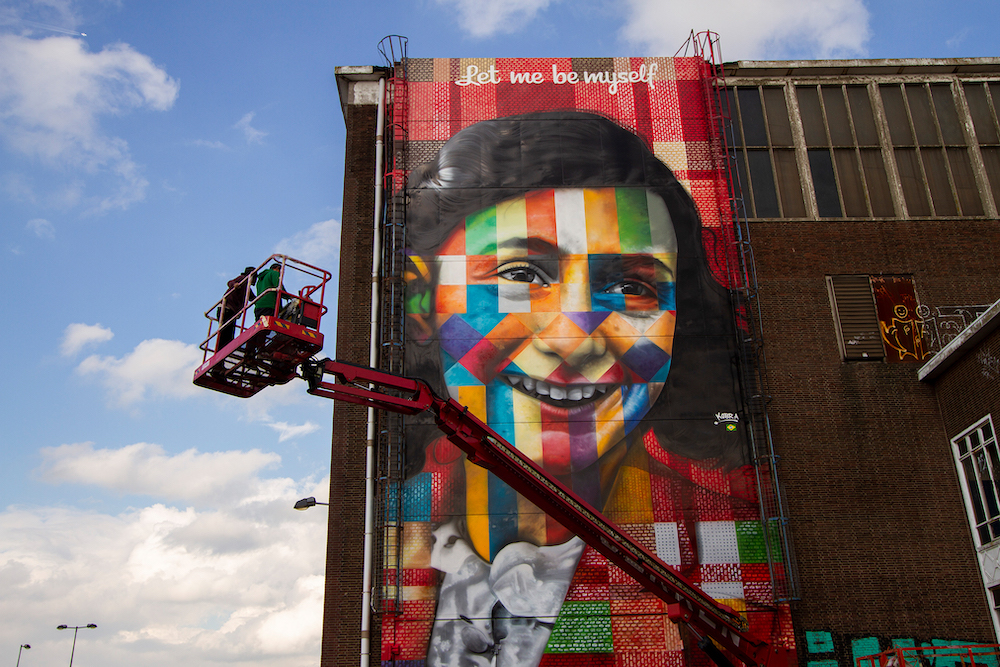
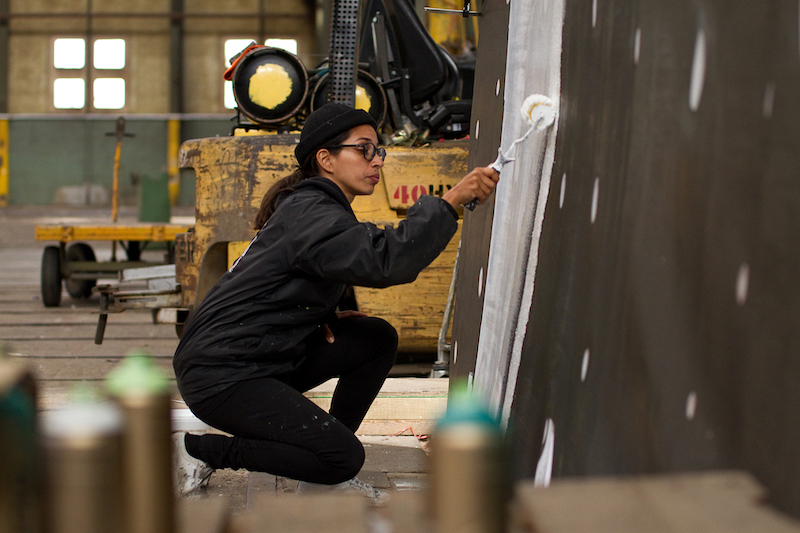
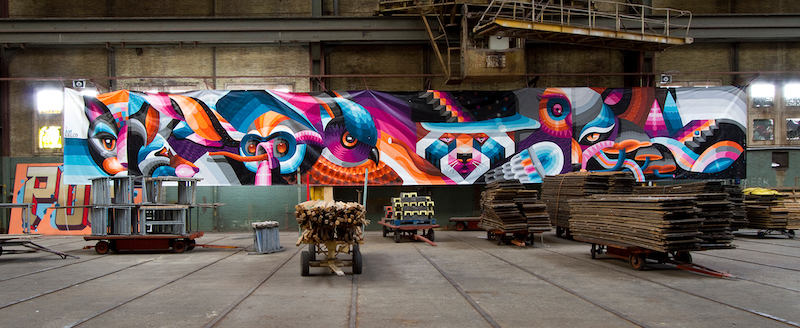
From 2015 up until a few weeks before the opening of the STRAAT Museum, street artists kept arriving in Amsterdam to spend a few days inside the former factory. Inspired by the industrial vibe and the authenticity of the neighborhood, and well-taken care of by our small yet passionate team, they all added their unique touch to the museum collection, which now boasts of 150 artworks by 130 artists with 32 nationalities.
Read also: Living in Amsterdam #5: The Museum is open, now what?
STRAAT Museum: The Concept of the Exhibition “Quotes from the streets”
STRAAT Museum’s opening exhibition “Quotes from the streets” addresses the fundamental question: “Is street art inside still street art?”
“While visiting STRAAT Museum to create their artworks, the artists revealed their creative journeys and personal perspectives. Connecting the dots between the works and their stories, it transpired that many key aspects of street art were still present in the museum’s collection. Based on these findings, the collection was categorized into five key narratives shared by graffiti and street artists worldwide, which gave birth to Quotes from the streets. [The exhibition underlies] how these artworks and their narrative connect to one another. This is what makes all of them, indeed, part of the same movement.”
From the catalogue of Amsterdam’s STRAAT Museum
These shared narratives are grouped into five main themes:
- Aesthetic – which explores street art’s pursuit of perfect shapes
- Personal – which views street art as a reflection of the artist’s universe
- Empathic – which zooms in on how street art communicates with its audience
- Grounded – which reveals the connection between street art and its environments
- Conscious – which demonstrates street art’s power to raise awareness for social and environmental causes
What you shouldn’t miss at STRAAT Museum in Amsterdam: a review of the opening exhibition from an insider’s perspective
Amsterdam’s STRAAT Museum: Section 1 – Aesthetic
Being a huge fan of post-graffiti, I really like the first section of the exhibition at the STRAAT Museum in Amsterdam, especially the subsection “Graffiti’s Legacy.” It’s fascinating how graffiti writers from different countries and ages similarly shifted toward abstraction, journeying down their own unbeaten paths and experimenting with new mediums to (re)discover the freedom lost after years of following the rigid rules of graffiti.
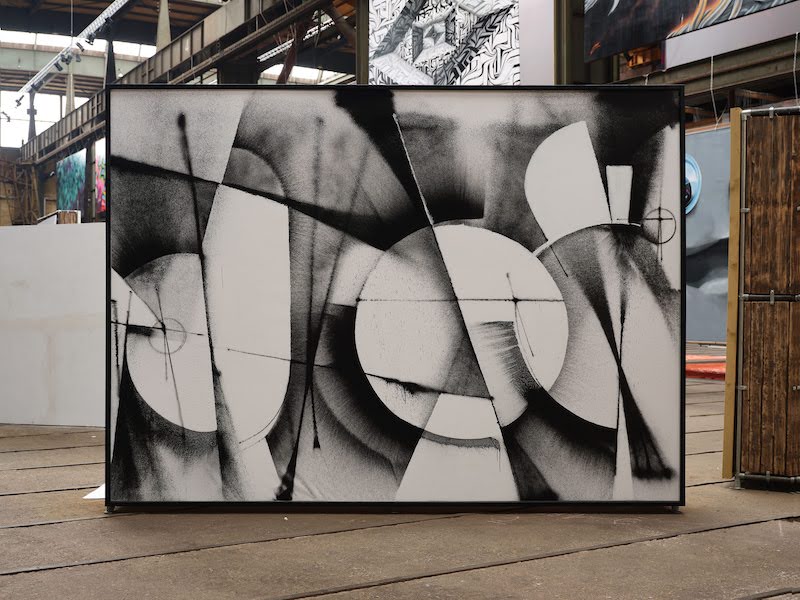
“I don’t paint letters on canvas, because when I’m painting canvases I like to distance myself from graffiti. But obviously it’s the same technique and the same letter evolution.”
L’Outsider
Amsterdam’s STRAAT Museum: Section 2 – Personal
Graffiti emerged from an existential need to be seen and noticed in inhuman cities. This idea is echoed in street art, where many works reveal something intimate about the artists themselves. In this section, I especially like the canvas painted by MonkeyBird, which reveals their artistic universe through the representation of various tools that symbolize the artists’ work, such as a compass or a clock, alongside the two mythical animals that gave rise to their artistic name. The architectural setting on this canvas is also rich in symbolism; a bridge whose columned ruins recall the beauty of ancient temples stands as an homage to Florence’s renaissance art. This bridge simultaneously represents time passed and time present. While dilapidated, it still retains its original function of support.
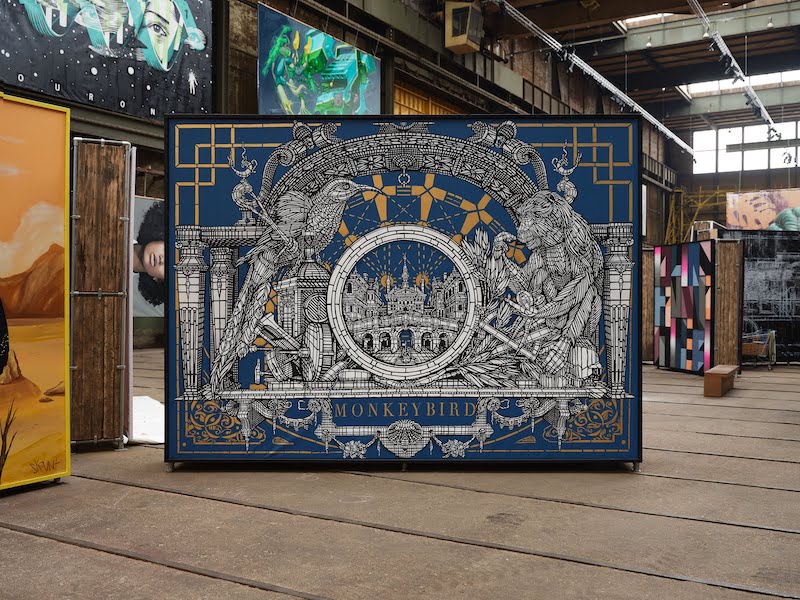
“We paint the symbolic story of men, usually through a contrast between the past and the present, or between beautiful, rising-up cities and ruins taken back by nature.”
MonkeyBird
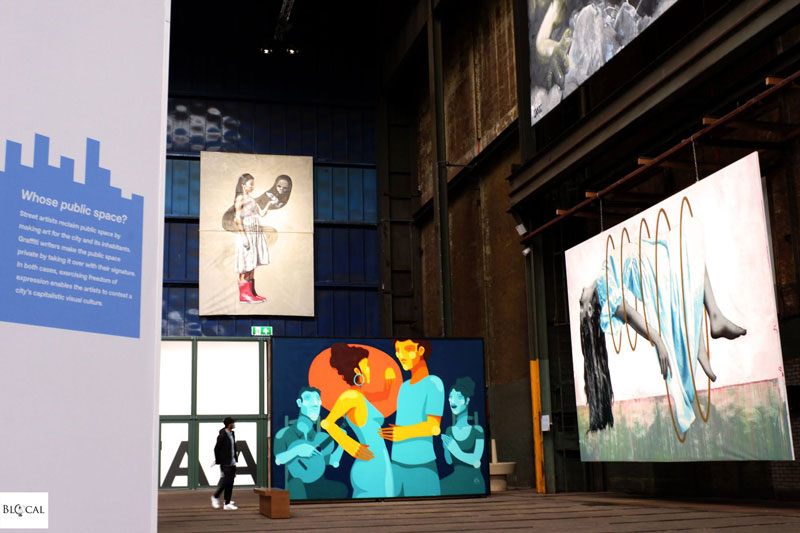
“People that freely express themselves -without looking for applause, prizes or money- is the old meaning of folklore. It inspires me a lot. It’s incredible how the beauty there just expresses itself. It’s like a thing from another age that I want to take back and put in front of people.”
Zesar Bahamonte
This section also boasts a subsection dedicated to Latin American muralism, as an expression of the national heritage and cultural pride of individuals.
“I want the museum visitors to feel a little bit of Mexico in their hearts. A little bit of warmth, a little bit of impact.”
Farid Rueda, about “Theft and love” (2018) (bottom right in the picture above)
Amsterdam’s STRAAT Museum: Section 3 – Empathic
In this section, street art reflects the continuous exploration into the universal aspects that define the human condition; themes that resonate on empathy with the viewers which, therefore, have the power to enter into a dialogue with passersby, often calling for the audience’s active participation to define the meaning of the artwork.
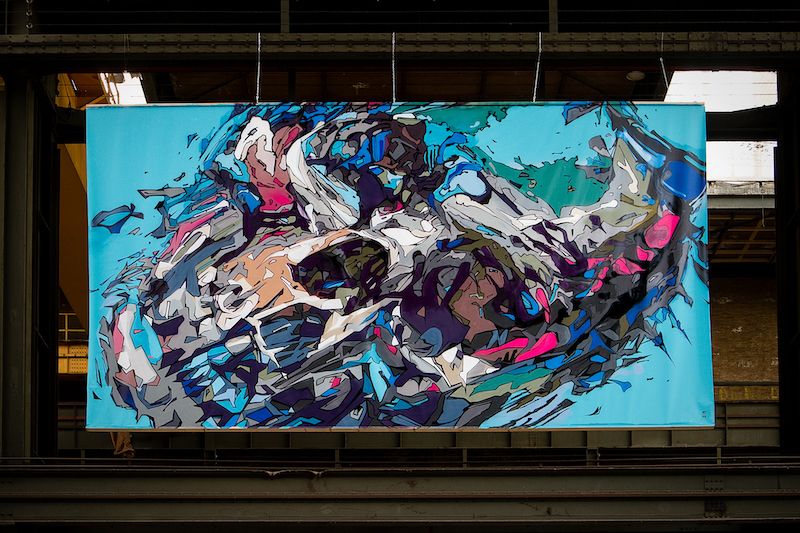
“For me the skull has a lot of symbolism about unity in humankind… By that I mean that when you look at a skull you can’t distinguish its race or religion. It’s about the fact that everyone has human values and instincts no matter what!”
Steve Locatelli, about “SKL16” (2016)
Amsterdam’s STRAAT Museum: Section 4 – Grounded
Highlighting the importance of context for street art, this section is composed of “city-inspired” artwork, which are grounded in a “universal” city imagery and “site-inspired” works of art grounded in the exact place where they were made: the warehouse that houses the STRAAT Museum, the NDSM Wharf, the city of Amsterdam, and the Kingdom of The Netherlands.
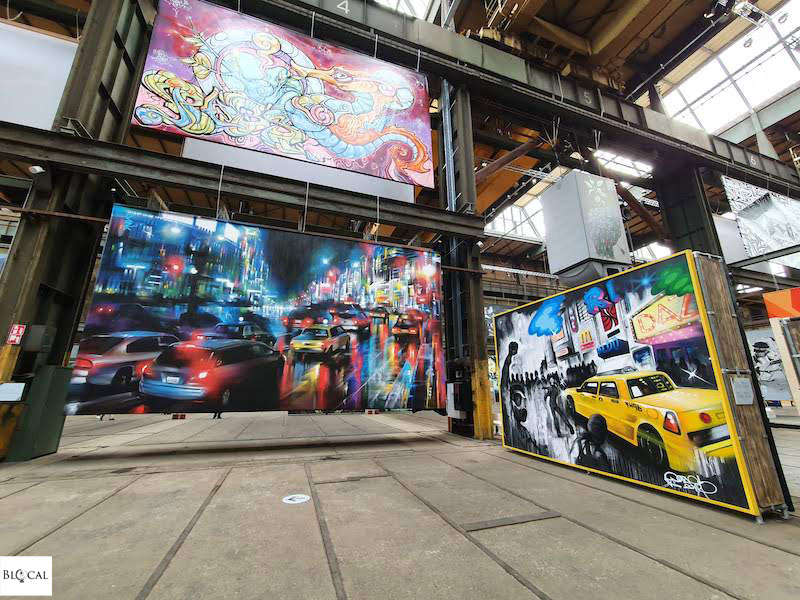
“The content of my art has largely to do with the urban environment. My surroundings influence me. I live in New York City, but I think that any urban environment would inspire me: it could be New York or Paris or London… All those cities are quite unique, but there are certain characteristics of the urban environment that kind of link them together.”
Daze
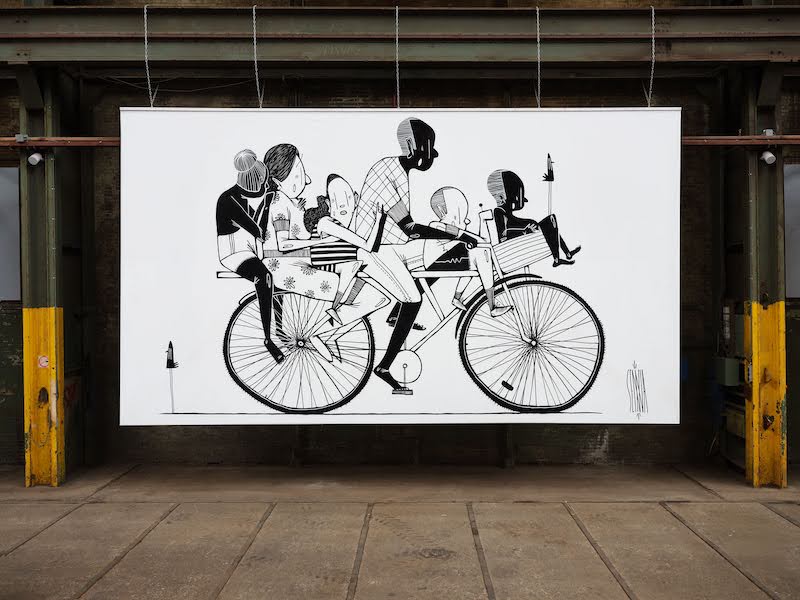
Amsterdam’s STRAAT Museum: Section 5 – Conscious
Because street art reaches a large audience in public space–an audience significantly amplified by social media–the artists displayed in this last section are deeply conscious of the impact their messages have. Therefore, they consciously use city streets to present their perspectives on urgent issues, such as immigration, identity, and the environment.
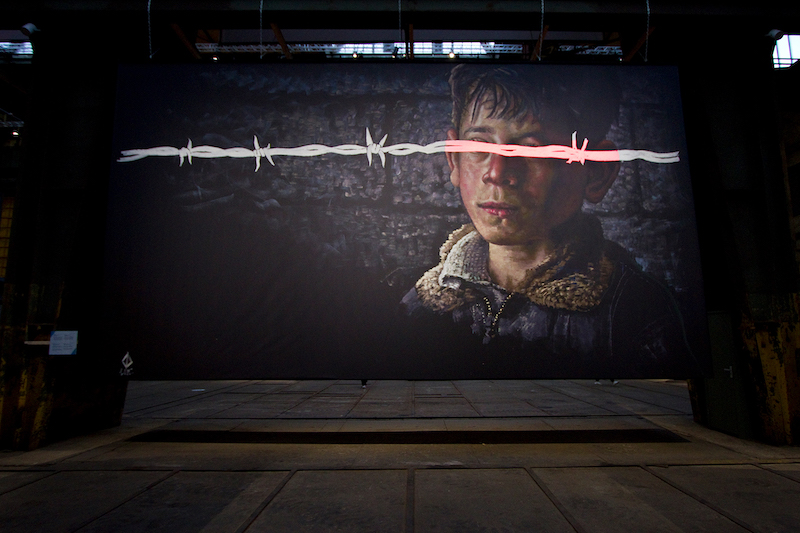
“I decided to paint about the refugee crisis because that’s a global situation that affects all of us. My reaction as an artist is always to paint about those things that move me and, as a migrant myself, I feel moved by the refugee crisis. I grew up in the ghettos of Buenos Aires, and the social inequalities that I experienced formed my social interest. That’s why I paint artworks aimed at raising awareness.”
Alaniz, about his artwork “Lack of sense of emergency” (2016)
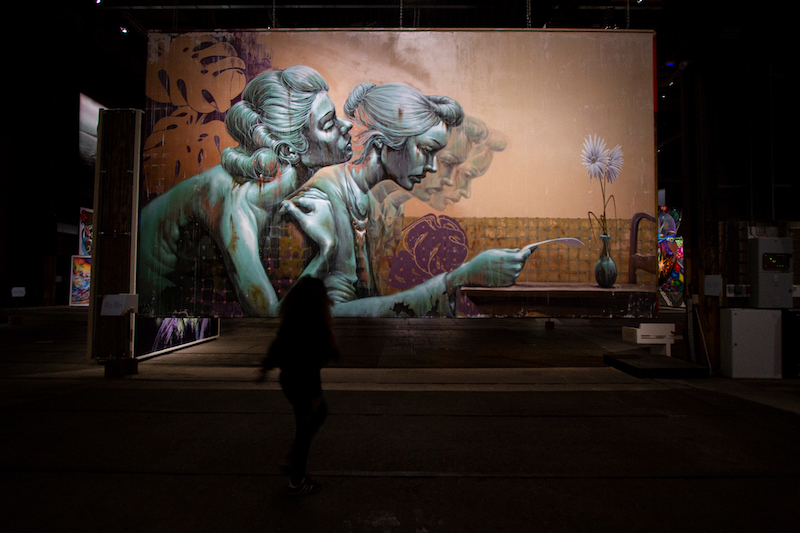
Artwork by Sokar Uno; Photo by Paolo Giannotti.
Subscribe to my monthly newsletter to stay updated on what am I up to after quitting my job as the Content Manager of the STRAAT Museum in Amsterdam.
STRAAT Collection: Graffiti and Street Artists on Show at the Street Art Museum in Amsterdam Noord
Rafael Sliks, Zësar Bahamonte, Snik, Dvate, Royyal Dog, Dourone, Said Dokins, DERM, Skount, Nase, MonkeyBird, Bims, L’Outsider, Daan Rietbergen, Mr. June, Caratoes, WESR, Bruno Smoky, Nicky Nahafahik, Xoooox, Jenny Sharaf, Nasca Uno, Oscar, Sidney Waerts, Welin, Balstrøm, David Walker, JanIsDeMan, Eoin, Sokar Uno, Kevin Ledo, Fin DAC, Guido de Boer, Mike 171 x SJK 171, Dotsy, Jim Vision, Joren Joshua, TWOONE, Daze, Inkie, Nomad Clan, Alex Senna, Vesod, George Rose, Guido van Helten, INO, The Lost Object, Helen Proctor, Ever, Morcky, Dagoe, SWOK, Ox Alien, Phibs, Bounce, Davor Smoljan, Klaas Lageweg, Welin, Bartkore, Millo, Beyond, Dan Kitchener, Cripta Djan, Treze, Adele Renault, Nuno Viegas, Base 23, Icy & Sot, Jeffrey Cheung, Osch, Erin Yoshi, Bier en Brood, SellFable, United Painting, Alaniz, Bonzai, Thomas Powell, Guitar y Banjo, Nafir, Crânio, Dale Grimshaw, Li-Hill, Seyb, Clandestinos, Chor Boogie, Vegan Flava, Jelmer Noordeman, Mando Marie, Elmar Karla, Eddie Colla, Pso Man, Kram, A squid called Sebastian, Vyal One, Alex Face, Wayne Horse, Malakkai, Taquen, Nils Westergard, FAKE, Tankpetrol, Bijdevleet, David Shillinglaw, Karski, Alice Pasquini, Paola Delfin, Lean Frizzera, Tymon de Laat, Buff Monster, Ben Slow, Pez, Mark Gmehling, Chris Dyer, Sipros, Apitatán, Oz Montania, Brigada Ramona Parra, Entes, Mateus Bailon, Farid Rueda, Uno Nueve, Gleo, Cix, Steve Locatelli, Astro, Ekundayo, Kool Koor, Binho Ribeiro, Shaun Burner, Milu Correch, Michel Alders, Hugo Kaagman, Carl KENZ, Joram Roukes, DOES, Czee13, Saïd Kinos, Dodici, Street Art Frankey, Dilk, Wasted Rita, Zurik, Zenk One, Tellas, Cornbread.
STRAAT Street Art Museum: The Catalogue
Having written Amsterdam’s STRAAT Museum catalogue is one of the accomplishments I’m most proud of! Check out the article I wrote sharing the editorial process behind it and enjoy the unpacking video.
